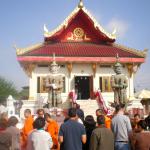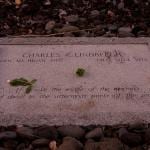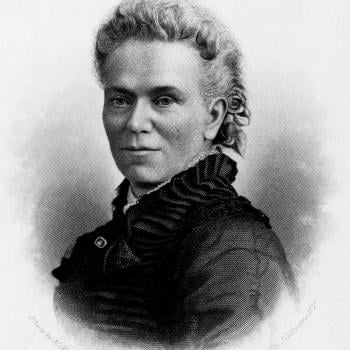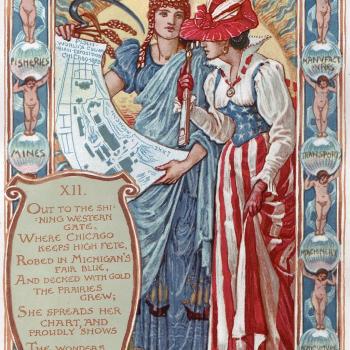When I am in conversations about American religious history – and specifically issues concerning teaching – I am surprised to find how many well informed people seem not to know one really fine source, and resource. I am referring to Harold Frederic’s The Damnation of Theron Ware (1896), a superb novel that is a treasure trove for many aspects of American religious life in that era. Through the 1920s, it was commonly regarded as one of the great American novels, and (unusually for the time) it greatly impressed a Transatlantic readership. (I am here expanding a blogpost of mine that appeared at this site some years ago).
Let me summarize it quickly. Theron Ware is a young Methodist minister who has been trained in a deeply conservative tradition highly suspicious of secular learning, and with a strong preference for Old Time hellfire preaching. When he arrives at a new position in a town in New York state (roughly, Utica), he is shocked to find himself mixing with an unexpectedly friendly circle of educated and worldly people, including a genial and cultured Irish Catholic priest, an atheist doctor, and a witty young Catholic woman. As he tells her, “I am in love with your sinners … I’ve had five days of the saints, over in another part of the woods, and they’ve bored the head off me.”
Much of the book involves the group’s conversations on the issues of the day, in an effervescent era of cultural and religious turmoil. That included matters of Biblical criticism, a fiercely controversial issue at the time, at the start of the American war between modernists and fundamentalists. This struggle is often taken to have begun with the 1893 heresy trial of Charles A. Briggs. Applying the new critical scientific scholarship, Briggs declared that “in every department of Biblical study we come across error . . . reason is a fountain of divine authority no less savingly enlightening than the Bible and the Church.” Suspended by the Presbyterians, he was later ordained in the Episcopal Church.
The emerging science of anthropology also played its role in raising doubts about Biblical origins, and Christian exclusivism. As anthropologist James Mooney argued in 1892, the patriarchal ancestors of the Biblical Hebrews “had reached about the plane of our own Navaho, but were below that of the Pueblo. Their mythologic and religious system was closely parallel.” If much of the Bible was the record of the barbarous tribes of ancient Israel, how could it be presented as superior to the legends and tales of the Navajo or the Cherokee? Myths are myths.
American feminist Bible criticism dates from these same years, with Elizabeth Cady Stanton’s Woman’s Bible (1895-98). In her Woman Church and State (1893), Matilda Joslyn Gage laid the foundation for theories of patriarchal oppression and misogyny, especially operating through religious structures and institutions. Gage pioneered the idea that witchcraft and witch trials were forms of patriarchal repression of women’s freedom.
Just how influential critical and radical approaches had become is suggested by the phenomenal public appetite for news stories about newly discovered scriptures and “new gospels,” which became a standard genre of mass media reporting from the late 1890s onward. Such stories catered to a genuine mass market of deeply interested ordinary people, and by no means only educated elites. Actually, the situation looks very much like what we might expect from media today.
Meanwhile, globalization created a new awareness of other religions. At the World’s Parliament of Religions held in Chicago in 1893, the great religions conversed on notionally equal terms, although within a framework devised by Protestants. At least among social elites, Buddhist and Hindu teachers now acquired a cachet they would never entirely lose. Those ideas were reinforced by the mass American appeal of Theosophy.
In the mid-1890s, educated people were struggling with these many new currents. We can only imagine what it must have been like for an unschooled figure like Theron Ware to be dropped suddenly into this cauldron.
In one memorable scene in Frederic’s novel, Ware is delighted to hear the doctor and priest talk of the amazing new archaeological discoveries in the Middle East, and he asks whether they cast any new light on the life of the Biblical Abraham. His two friends stare at each other in astonishment that anyone in this advanced year of 1896 could be so uninformed as to believe in the literal existence of Abraham. The priest speaks casually of “the Christ-myth.”
Every page of the conversations in Theron Ware clamors for discussion in any modern seminar on the history of American religion. If nothing else, after reading Harold Frederic’s book, can we please avoid presenting the common suggestion that our ancestors were blissfully unaware of challenges to faith and Biblical truth until the very modern era, perhaps after the 1960s? Oh yes, indeed, they were.
Particularly striking is Ware’s vision of a liberal inclusive Catholicism as the nation’s likely religious future. This is all the more remarkable when we realize Ware’s previously engrained hostility to Catholicism, in a passage I often use to illustrate the complex roots of anti-Catholic ideology. Ware examines the looming tableau forming in his mind:
The foundations upon which its dark bulk reared itself were ignorance, squalor, brutality and vice. Pigs wallowed in the mire before its base, and burrowing into this base were a myriad of narrow doors, each bearing the hateful sign of a saloon, and giving forth from its recesses of night the sounds of screams and curses. Above were sculptured rows of lowering, ape-like faces from Nast’s and Keppler’s cartoons, and out of these sprang into the vague upper gloom—on the one side, lamp-posts from which Negroes hung by the neck, and on the other gibbets for dynamiters and Molly Maguires, and between the two glowed a spectral picture of some black-robed, tonsured men, with leering satanic masks, making a bonfire of the Bible in the public schools.
This vision encapsulates the mingled themes of ethnic, class, and race prejudice, plus anti-urbanism, all united through evocative religious symbols. It really is all here!
Again, this speaks to strictly contemporary political and social concerns. This was also the era of the stridently anti-Catholic American Protective Association, a hugely powerful quasi-Masonic political movement that aimed to safeguard the nation against a Catholic takeover. Although largely forgotten today, the APA closely foreshadowed the Ku Klux Klan of the 1920s, and like it, it decided electoral politics in several states.
The Damnation of Theron Ware offers little consolation to evangelicals. If Ware is liberated from his bigotry, he also loses his faith and his moral bearings in the process, and suffers a psychic collapse, his “damnation.” The book ends with him contemplating a new non-clerical career as a rabble-rousing political demagogue, in a vision that eerily foreshadows twentieth century fascism.
Beyond the pages of the novel, Harold Frederic’s own life illustrates one potent theme of the age, namely the overwhelming popularity of Christian Science and New Thought. When Frederic fell gravely ill, his mistress insisted that he be treated according to the tenets of Christian Science, without involving a medical professional. Frederic died in 1898, aged just 42, leading to a scandalous prosecution of the mistress, brought by his widow.
The book is a woefully under-appreciated American classic.













